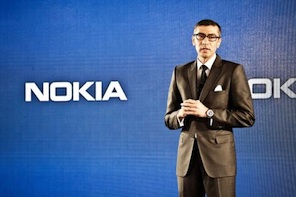Nokia has launched a range to services to help operators shift to 5G, with the vendor’s CEO identifying healthcare as a key opportunity for the company.
The vendor’s 5G Acceleration Services have been developed to give operators a dedicated transformation plan from LTE to next generation infrastructure.
It said it would work with operators to develop a business case for the shift, including assessing spectrum requirements and producing a phased strategy for a company’s business, technology and operations.
Nokia will hold workshops discussing the impact of 5G on network architecture, planning and deployment, as well as produce radio access network design based on specific needs.
According to Igor Leprince, Head of Global Services at Nokia, the new offering can “minimise the complexity” of the move towards 5G.
Andy Hicks, Research Director, IDC’s EMEA Telecommunications group, said: “5G isn’t just ‘4G 2.0.’ For one thing, this time the use cases are developing ahead of the technical standard. That’s healthy for the industry, but will also require networks to support myriad performance profiles fairly rapidly.
“Operators thus have to make sure that their 5G evolution plans incorporate both upgrades to their networks and advancements in their operational capabilities. If they can start to monetise new use cases while still migrating toward 5G, so much the better.”
When he addresses the CTIA Super Mobility conference in Las Vegas on Thursday (8 September), Nokia CEO Rajeev Suri will say 5G will play a central role in remote diagnostics and surgery, as well as automation and connected driving.
He will say: “5G will transform many aspects of our lives. Only 5G will deliver the capacity, connectivity and low latency to enable advanced applications, such as digital health – connecting medical practitioners with patients to continuously monitor vital signs, preventing conditions from becoming acute and helping doctors constantly adapt treatments to meet changing conditions.”
One such operator is Tele 2 Russia. Nokia signed a memorandum of understanding with the operator to focus on how LTE-Advanced and 5G can deliver real-time HD video and Internet of Things networks, as well as network automation.
They will explore technologies such as MIMO antenna systems, multiple carrier aggregation, LTE-broadcast, edge video orchestration and traffic optimisation.
Ritvars Krievs, CTO at Tele2 Russia, said: “We expect 5G to become mainstream technology by 2021. Working with Nokia we can take advantage of the technologies that capitalize on the efficiencies enabled by 5G to differentiate our offer and exceed the expectations of our subscribers.”
Last week Nokia launched 4.5 Pro, the latest attempt by a vendor to bridge the gap between LTE networks and those of the future.
It will be powered by its Airscale radio portfolio that was announced at this year’s Mobile World Congress. Operators will be able to aggregate up to five spectrum bands across paired, unpaired and unlicensed spectrum.
As the industry moves closer to 2020 and the launch of 5G, Nokia is also planning a range of “4.9G” infrastructure, which will boost capacity and data rates and reduce latencies. The vendor is predicting speeds of several gigabits per second, with cloud-based networks using edge computing to slice latencies to less than 10msec.
Samih Elhage, President of Mobile Networks at Nokia, said: “While the ever-connected world of people and IoT drives huge data demands, the speeds enabled by 5G will be a colossal step in operators’ network evolution. However, with our 4.5G, 4.5G Pro and 4.9G technologies, we will provide a smooth evolution path that will allow them to increase capacity and improve the user experience while creating new revenue opportunities.”



